William "Huette" Wallick- 38th Indiana, Co. D
Rank: Private
Place of enlistment: Evansville, Vanderburgh County, Indiana
Mustered into Federal service: November 11, 1864
Service Time: 8 Months, 4 days
Born: May 10, 1845 - Tuscarawas County, Ohio
Age at enlistment: 18
Height: 5'9" black hair, black eyes
Civilian occupation: Farmer
Family Lineage
William Huette, son of "Daviess County" Michael, son of "Bunker Hill" Michael, son of "Bedford County" Michael, son of Hans Michael and Esther Wallick
In the American Civil War it was possible for a man who was drafted to escape his military obligation by hiring a “substitute” in his place. A draftee at the beginning of the war could pay a three-hundred dollar commutation fee to the United States Government and be excused from service. However, as the war dragged on, the government grew weary of trying to find men to replace those who bought their service time and the draftee had to find his own replacement and negotiate a fee with the substitute. Commutation fees skyrocketed in price as more men were required for the war and fewer men volunteered. This fusion of military obligation to free market economics meant that by the war's end the "substitute soldier" could demand double, triple or even quadruple the original $300 dollar fee. The controversial policy gave rise to the slogan, "Rich man's war, poor man's fight."
William Huette Wallick was a substitute soldier and he is the only Wallick who served as such during the war. His family called him by his middle name, Huette, and that is how we will refer to him in this biographical sketch. There were actually four William Wallicks from the Hans Michael lineage who served during the war, three from Indiana and one from Ohio. The use of their middle names or initials is essential in this study to help distinguish one soldier from another.
William "Huette" Wallick c. 1904
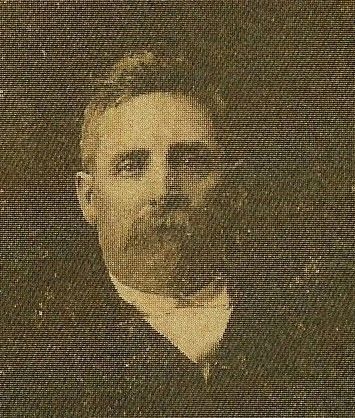 Huette was the first born son of “
Huette was the first born son of “
William "Huette" Wallick with the 38th Indiana Volunteer Infantry
1864
NOV 11 Huette is mustered into Federal service in
Huette Wallick's enlistment paper as substitute for Taylor A. Pensinger
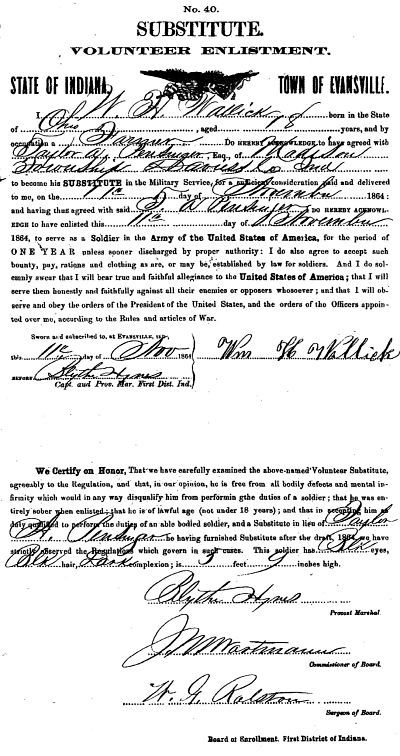
1865
JAN Huette is posted with the 38th Indiana in
FEB 5 The 38th Indiana marches out of
Some ruins of Columbia, South Carolina.
February, 1865.
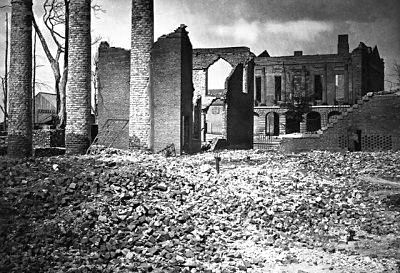
The 38th Indiana is deployed on this field, just in front of the trees at the opening of the Battle of Bentonville. Their corps attacks but is thoroughly routed and must retreat before the enemy in what becomes mockingly known as "The Battle of Acorn Run." It ridicules Huette's XIV Army Corps performance, for their corps insignia is, the acorn.

MAR 24 The Regiment occupies
APR 10-14 Huette and the 38th Indiana advance on
APR 26 Surrender of General Johnston’s Confederate Army at Bennett House.
Bennett House, near Durham, NC, is the site of General Johnston's surrender.
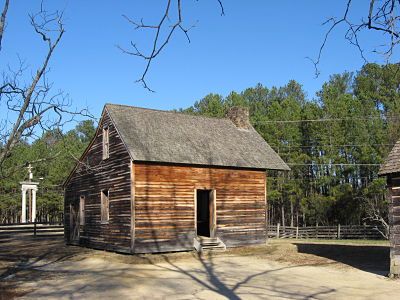
MAY 24 Grand Review of General Sherman’s Western Army. At the conclusion of the war both Huette and Charles F. Wallick march past this Presidential Reviewing Stand during the Grand Review of the Western Armies in Washington D.C. General Grant, President Johnson and his Cabinet, plus other important political and military dignitaries are present. There are 65,000 men in the parade and it takes six hours to pass by the grandstand.
The Presidential Reviewing Stand on Pennsylvania Ave. May 24, 1865
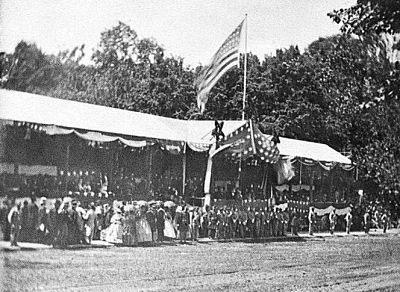
JUN The 38th Indiana travels to
Jul 15 Huette and the men of the 38th Indiana Infantry are mustered out of Federal service at
Comrades-in-Arms
Father
Michael 27th IN
William Huette Wallick is buried in the Mount Olive
Church Cemetery, just east of Odon, Indiana.

Song- Marching Through Georgia
"Marching Through Georgia" is an appropriate song for new recruit Huette Wallick. In early January, 1865, he arrived at Savannah, Georgia to serve with distant cousin and veteran soldier Charles F. Wallick. Charles and General Sherman had just completed their trek through the heart of Georgia.
Return to Top
Return to
Wallick Family Website
